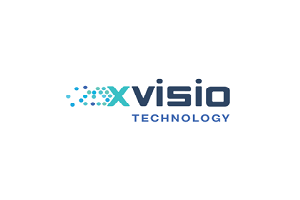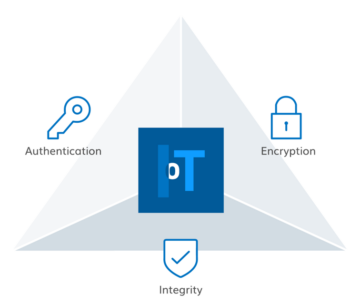Industrial companies are facing formidable hurdles, both in meeting their operational objectives, and in understanding the vast volumes of data available to them to decide how best they can achieve those goals. For example, 38% of European capital-intensive companies, highlighted in recent research commissioned by AspenTech, say they are balancing global demand for resources with sustainability targets and a need to meet profitability goals, says Nicole Rennalls, VP and general manager, DataWorks, Aspen Technology.
To have the best chances at meeting this objective they must have industrial data management strategies in place to leverage existing assets and systems to unlock the full potential of their plants and drive their businesses forward.
Currently too much industrial data is essentially wasted. In fact, according to the European Commission, 80% of industrial data that is collected is never used. To help ensure they don’t waste the data they have gathered, asset-intensive organisations require a holistic and integrated solution that facilitates seamless connectivity across all data sources while offering real-time monitoring capabilities. With such a comprehensive framework in place, these companies can bolster asset reliability through predictive equipment failure analysis, ultimately leading to reduced maintenance costs and enhanced overall plant efficiency.
Delivering on this vision is challenging today. There is no lack of data available, of course. Companies across these sectors have been recording and capturing large amounts of it for decades. This data has incredible potential but putting it to good use is far easier said than done.
Unlocking high value use cases that leverage this data, in areas such as production optimisation, machine learning, or emissions tracking, requires the implementation of robust data management strategies. Industrial data and systems have, after all, traditionally been located in organisational silos, with different pockets of functionality developed by different vendors at different times. This has, in turn, made data management difficult and rendered most of the data not actionable at scale.
Navigating the data lake dilemma
To address the challenges outlined above, organisations frequently resort to constructing data lakes in which data from disparate sources is aggregated. These data lakes effectively act as reservoirs that rapidly accumulate vast amounts of information. However, making the most of these data lakes requires a workforce proficient in data handling and analysis, posing a significant challenge to industrial businesses.
Cultivating such highly skilled personnel becomes even more daunting due to the rapidly evolving workforce, where specialised expertise is at a premium. Navigating this complex landscape demands a strategic approach, empowering businesses to unleash the full potential of their data lakes and secure a competitive advantage.
The emergence of real-time data platforms fit for commercial use


As asset-intensive businesses navigate potential solutions, it is clear that traditional data historians remain key, enabling industrial organisations to access data, identify what is relevant, place it into workflows and then make it consumable. The market for these tools remains on a expansion path globally, with analyst, Mordor Intelligence projecting it to grow from US$1.15 billion (€1.05 billion) in 2023 to US$1.64 billion (€1.49 billion) by 2028, at a CAGR (compound annual growth rate) of 7.32% during the forecast period.
Today, operators and engineers within plants use historians to monitor operations, analyse process efficiency and investigate opportunities. These are mission-critical systems, customised for the operation teams’ use.
Over time, though, there has been a growing need for cloud-based applications to support advanced analytics and quickly scale up. At the same time, on the IT side of the equation, digitalisation teams and products require clean, structured, and contextualised data to generate usable insights and grow use case volumes. While the various data sources, including historians, provide at-a-glance analyses, the customised nature of these sources makes it hard to automate consistency in how data is contextualised and structured.
Implementing a new solution
The synergy of plant-level historian solutions and enterprise data integration and management technology enables a seamless convergence of IT (Information technology) and OT (operational technology) functions. In line with this, we are now witnessing the emergence of next-generation real-time data platforms, helping industrial organisations collect, cleanse, consolidate, contextualise, and analyse data from their operations like never before.
This data foundation represents the starting point for industrial organisations to optimise processes using machine learning and AI and develop new ways of working based on data-derived insights.
Such organisations will, in the future be able to develop current data systems to collect better, merge, store and retrieve data to improve production operations with data-fuelled decisions, or support performance management and analytics across the business.
This new data consolidation approach marks a pivotal moment in the evolution of data management. By centralising information from various sources into a unified, cloud-based or on-premises database, businesses can unlock unprecedented levels of efficiency, visibility, and innovation. The marriage of batch and event processing not only delivers track and trace capabilities like never before but also empowers businesses to delve into batch-to-batch analysis with ease.
Moving ahead positively
Industrial companies today face numerous challenges, including the need to meet operational objectives, understand vast amounts of data, and improve asset reliability. To address these challenges requires a data management strategy that leverages existing assets and systems. This strategy should include an integrated solution that allows companies to connect all data sources, access real-time monitoring, enhance asset reliability, and increase overall plant efficiency.


Traditional data historians are still vital to this strategy but must be combined with cloud-based applications and enterprise data integration and management technology. This will enable industrial companies to collect, cleanse, consolidate, contextualise, and analyse data from their operations. This data foundation will be the starting point for industrial companies to make better use of industrial data in the future.
Today, the use of real-time data platforms is becoming increasingly common worldwide, as companies across these regions look for ways to improve their operational efficiency and decision-making.
Using this approach allows organisations to evolve current data systems to collect, merge, store, and retrieve large volumes of data. This will improve production operations with data-fuelled decisions and support performance management and analytics across the enterprise. In addition, industrial companies will be able to monitor real-time asset performance, track the progress of materials through complex processes, and integrate people, data, and workflows to support compliance.
The author is Nicole Rennalls, VP and general manager, DataWorks, Aspen Technology.
Comment on this article below or via Twitter: @IoTNow_OR @jcIoTnow
- SEO Powered Content & PR Distribution. Get Amplified Today.
- PlatoData.Network Vertical Generative Ai. Empower Yourself. Access Here.
- PlatoAiStream. Web3 Intelligence. Knowledge Amplified. Access Here.
- PlatoESG. Automotive / EVs, Carbon, CleanTech, Energy, Environment, Solar, Waste Management. Access Here.
- BlockOffsets. Modernizing Environmental Offset Ownership. Access Here.
- Source: https://www.iot-now.com/2023/08/09/134173-turn-industrial-data-into-your-competitive-superpower/
- :has
- :is
- :not
- :where
- $UP
- 15%
- 2023
- 2028
- 49
- 7
- a
- Able
- above
- access
- Accumulate
- Achieve
- across
- Act
- addition
- address
- advanced
- ADvantage
- After
- ahead
- AI
- All
- allows
- also
- amounts
- an
- analyse
- analysis
- analyst
- analytics
- and
- annual
- applications
- approach
- ARE
- areas
- article
- AS
- asset
- Assets
- At
- author
- automate
- available
- balancing
- based
- BE
- becomes
- becoming
- been
- before
- below
- BEST
- Better
- Billion
- bolster
- both
- business
- businesses
- but
- by
- CAGR
- CAN
- capabilities
- Capturing
- case
- cases
- challenge
- challenges
- challenging
- chances
- clear
- collect
- combined
- commercial
- Common
- Companies
- competitive
- complex
- compliance
- Compound
- comprehensive
- Connect
- Connectivity
- consolidate
- consolidation
- constructing
- Convergence
- Costs
- course
- Current
- data
- data integration
- Data Lake
- data management
- Database
- decades
- decide
- Decision Making
- decisions
- delivers
- Demand
- demands
- develop
- developed
- different
- difficult
- digitalisation
- disparate
- done
- Dont
- drive
- due
- during
- ease
- easier
- effectively
- efficiency
- emergence
- Emissions
- empowering
- empowers
- enable
- enables
- enabling
- Engineers
- enhance
- enhanced
- ensure
- Enterprise
- equipment
- essentially
- Europa
- European
- Even
- Event
- evolution
- evolve
- evolving
- example
- existing
- expansion
- expertise
- Face
- facilitates
- facing
- fact
- Failure
- far
- fit
- For
- Forecast
- formidable
- Forward
- Foundation
- Framework
- frequently
- from
- full
- functionality
- functions
- future
- gathered
- General
- generate
- Global
- Globally
- Goals
- good
- Grow
- Growing
- Growth
- Handling
- Hard
- Have
- help
- helping
- High
- high value
- Highlighted
- highly
- holistic
- How
- However
- HTTPS
- Hurdles
- identify
- implementation
- improve
- in
- include
- Including
- Increase
- increasingly
- incredible
- industrial
- information
- information technology
- Innovation
- insights
- integrate
- integrated
- integration
- into
- investigate
- iot
- IT
- jpg
- Key
- Lack
- lake
- landscape
- large
- leading
- learning
- levels
- Leverage
- leverages
- like
- Line
- located
- Look
- machine
- machine learning
- made
- maintenance
- make
- MAKES
- Making
- management
- manager
- Market
- materials
- max-width
- Meet
- meeting
- Merge
- moment
- Monitor
- monitoring
- more
- most
- much
- must
- Nature
- Navigate
- navigating
- Need
- never
- New
- news
- next-generation
- no
- now
- numerous
- objective
- objectives
- of
- offering
- on
- only
- operation
- operational
- Operations
- operators
- opportunities
- optimise
- or
- Organisations
- outlined
- overall
- path
- People
- performance
- period
- Personnel
- pivotal
- Place
- plants
- Platforms
- plato
- Plato Data Intelligence
- PlatoData
- pockets
- Point
- potential
- Premium
- process
- processes
- processing
- Production
- Products
- profitability
- Progress
- provide
- Putting
- quickly
- rapidly
- Rate
- real-time
- real-time data
- recent
- recording
- Reduced
- regions
- relevant
- reliability
- remain
- remains
- Reports
- represents
- require
- requires
- research
- Resort
- Resources
- robust
- Said
- same
- say
- says
- Scale
- seamless
- Sectors
- secure
- should
- side
- significant
- silos
- skilled
- solution
- Solutions
- Sources
- specialised
- Starting
- Still
- store
- Strategic
- strategic approach
- strategies
- Strategy
- structured
- such
- superpower
- support
- Sustainability
- synergy
- Systems
- targets
- teams
- Technology
- than
- that
- The
- The Future
- their
- Them
- then
- There.
- These
- they
- this
- those
- though?
- Through
- time
- times
- to
- today
- too
- tools
- trace
- track
- Tracking
- traditional
- traditionally
- TURN
- Ultimately
- understand
- understanding
- unified
- unleash
- unlock
- unprecedented
- usable
- use
- use case
- used
- using
- value
- various
- Vast
- vendors
- via
- visibility
- vision
- vital
- volumes
- vp
- Waste
- ways
- we
- What
- What is
- which
- while
- will
- with
- within
- witnessing
- workflows
- Workforce
- working
- worldwide
- Your
- zephyrnet












